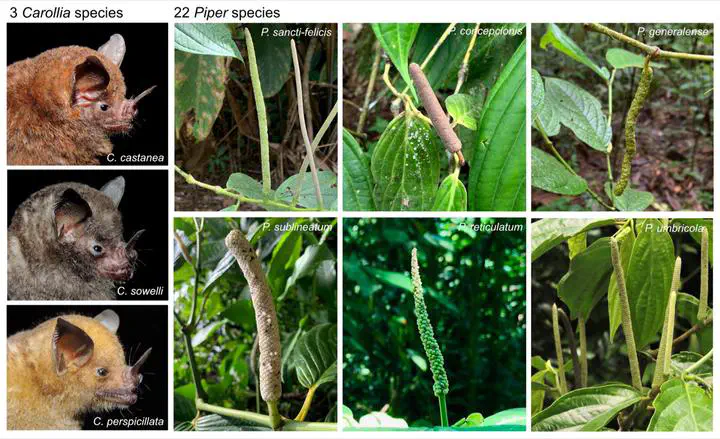Fruit odorants mediate co-specialization in a multispecies plant–animal mutualism
 Image credit: S. Santana
Image credit: S. Santana
Abstract
Despite the widespread notion that animal-mediated seed dispersal led to the evolution of fruit traits that attract mutualistic frugivores, the dispersal syndrome hypothesis remains controversial, particularly for complex traits such as fruit scent. Here, we test this hypothesis in a community of mutualistic, ecologically important neotropical bats (Carollia spp.) and plants (Piper spp.) that communicate primarily via chemical signals. We found greater bat consumption is significantly associated with scent chemical diversity and presence of specific compounds, which fit multi-peak selective regime models in Piper. Through behavioural assays, we found Carollia prefer certain compounds, particularly 2-heptanol, which evolved as a unique feature of two Piper species highly consumed by these bats. Thus, we demonstrate that volatile compounds emitted by neotropical Piper fruits evolved in tandem with seed dispersal by scent-oriented Carollia bats. Specifically, fruit scent chemistry in some Piper species fits adaptive evolutionary scenarios consistent with a dispersal syndrome hypothesis. While other abiotic and biotic processes likely shaped the chemical composition of ripe fruit scent in Piper, our results provide some of the first evidence of the effect of bat frugivory on plant chemical diversity.